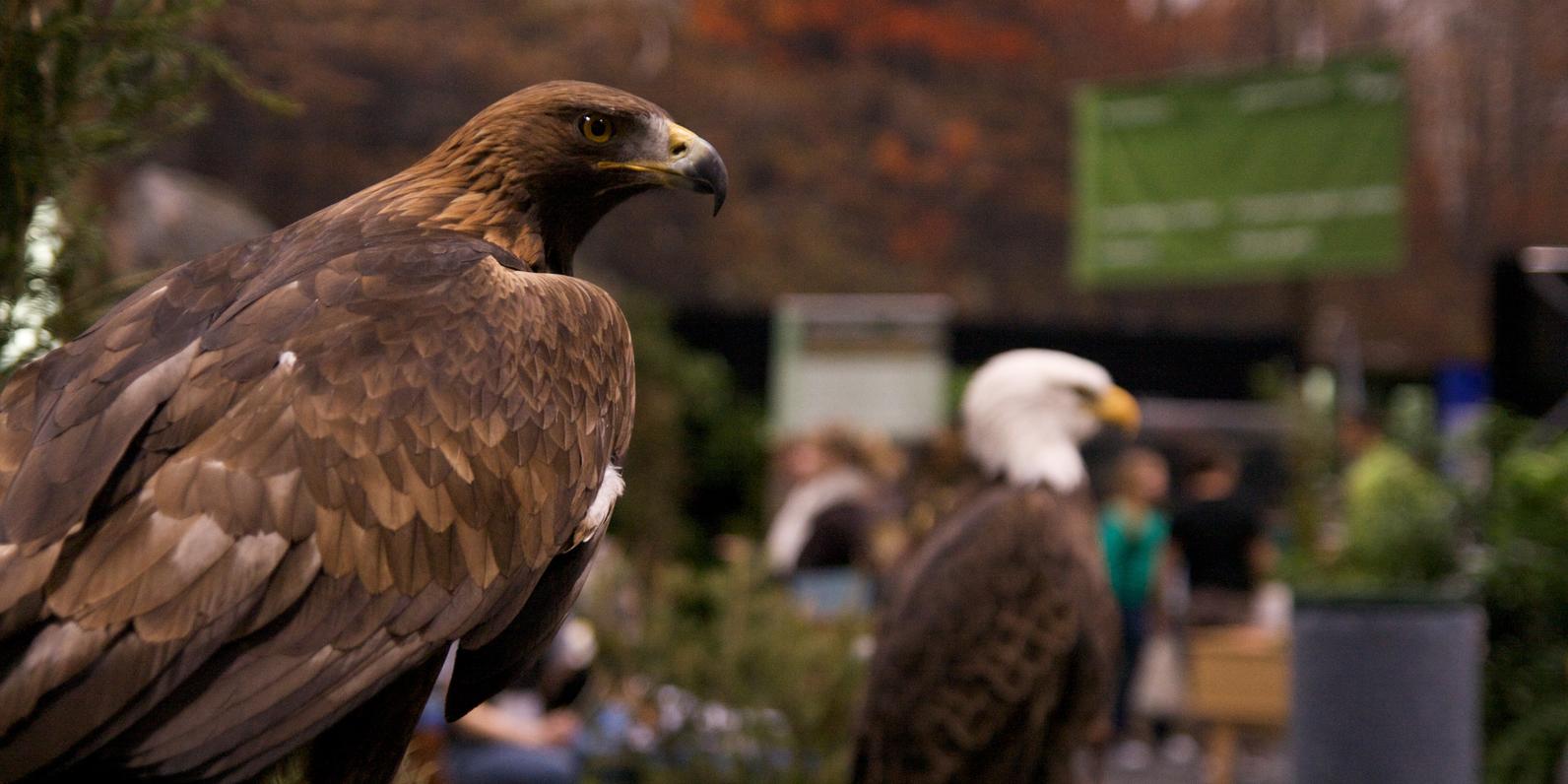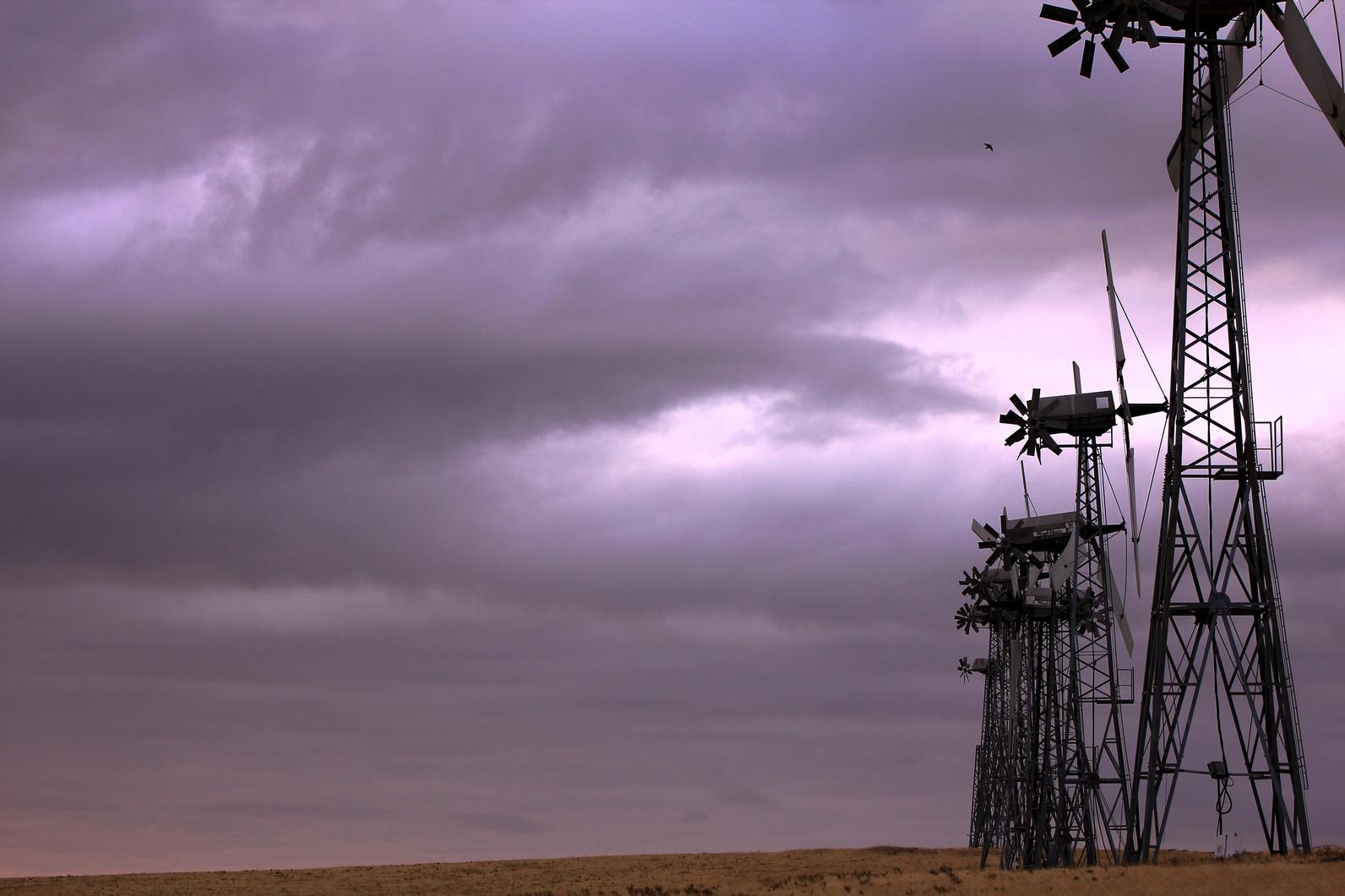Siting renewable energies so it is both low-carbon and sustainable for wildlife populations
Golden Eagle Photo: Nathan Rupert
Climate change is one of today’s most significant threats facing birds and people alike, and renewable energy will be a substantial part of the solution to global warming. Across the US and in California in particular, renewable energy have been rapidly developing and expanding in recent years. But with the growth of the industry must also come careful and strategic planning.
Audubon consistently advocates that new projects must be sited right. The idea behind so-called “smart siting” is that power plants and transmission lines must be located and designed using methods that avoid, minimize and mitigate impacts to the fullest extent possible. Smart-siting really follows a few simple and intuitive steps: identify and avoid important wildlife areas; within a project footprint, identify and avoid areas that will pose the greatest risk to wildlife; place power plants close to people so less transmission infrastructure is needed; and develop power plants on previously-disturbed land to protect habitat.
Audubon California and our allies have the opportunity to push renewable energy development down the right path in a state that is leading the country in setting renewable energy goals. What happens in California is being watched across the world. We can show that low-carbon energy can be developed in a way that is economical and sustainable for local wildlife and habitats.
The resources below offer a more detailed explanation of smart-siting, as well as considerations for different types of renewable energy. Further resources for Audubon chapter members can be found by visiting the Moore Charitable Foundation Energy Siting Resource Center on Audubon Works.
A primer to wildlife-friendly renewable energy in California in 3 graphics
The plan, also known as DRECP, will protect our deserts while fighting against climate change.
Our electricity grid is in need of upgrades to fully support renewable energy.
From rooftop panels to concentrated towers, there's more to solar than you might guess.
While some wind farms have earned a bad rep, wind energy can be sited to greatly minimize threats to birds.
The earth's energy can help fight climate and revitalize the Salton Sea area.
The comment period for a proposed rule to extend eagle “take” permits from five to thirty years expires on July 5. The change, suggested by the United States Fish and Wildlife Service, would mean that parties that incidentally harm birds in their regular operations such as wind energy companies could legally kill eagles with little repercussion or monitoring for the extended period of time. To fight back against this change, Audubon is asking members to publicly comment in opposition to the extended-period kill permits.
The change was originally proposed in late 2013, but was brought to a halt last year when the U.S. District Court for the Northern District of California ruled in Shearwater v. Ashe that the permit term could not be extended to thirty years without an environmental impact statement. Now that the environmental assessment is complete, the Fish and Wildlife Service hopes to move forward with the looser permit scheme. Unfortunately, however, the assessment revealed that the alteration could threaten eagle species such as bald eagles and golden eagles.

“The Bald Eagle—the very symbol of America—and the majestic Golden Eagle deserve strong protection,” said David Yarnold, president and CEO of the National Audubon Society. “A program that provides 30-year permits without proven mitigation measures available and without adequate oversight is just not good enough.”
Of the estimated 143,000 bald eagles in the United States, the permit extension would allow for 4,200 bald eagles to be killed or injured annually before labelling the species as endangered. The golden eagle, which lives mainly in the Western U.S. and is held as sacred by many Native American and Five Nations people, would be particularly threatened. Golden eagle numbers—at just 40,000 left in the United States—are already decreasing in California and the other Western states, in part due to wind turbines in California’s Altamont Pass.

The Fish and Wildlife Service argues that because evaluations would still occur every five years, further regulations could be put in place to protect eagles as necessary. However, Audubon California believes that the Service lacks the resources necessary for such a strategy to be effective. Also troublesomely, the counting of eagles killed falls upon the wind companies and not an independent party.
Our newsletter is fun way to get our latest stories and important conservation updates from across the state.
Help secure the future for birds at risk from climate change, habitat loss and other threats. Your support will power our science, education, advocacy and on-the-ground conservation efforts.
California is a global biodiversity hotspots, with one of the greatest concentrations of living species on Earth.